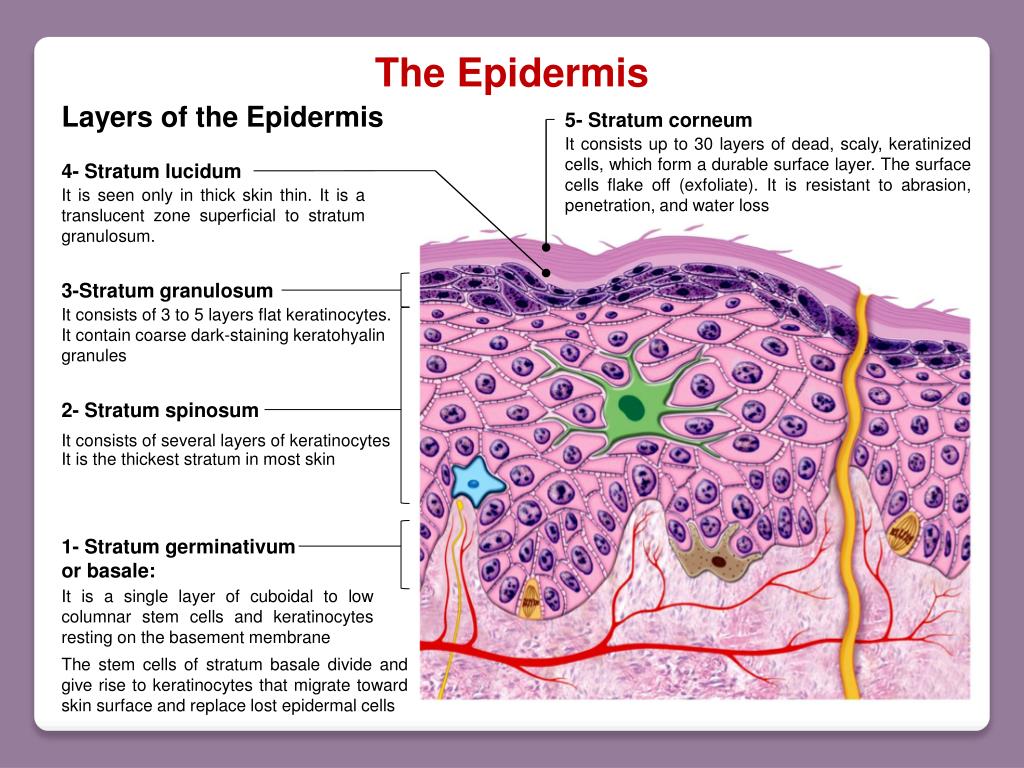

Provides thickness and strength to withstand friction to the soles and palms. Cells contain densely packed keratin and are connected by desmosomes. Stratum lucidum-composed of 3–5 layers of flattened eosinophilic cells, creating a clear or translucent layer located only in the soles of the feet and palms of the hands.
#Translucent cells containing keratin skin#
The intercellular spaces are filled with a lipid-rich material that forms a sheet or envelope around the cells, thereby making skin a barrier to both water loss and extrinsic foreign material. Stratum granulosum-composed of flattened cells that are undergoing terminal differentiation as they approach the outermost layer of skin. This is the thickest layer of the epidermis. Stratum spinosum-composed of slightly flattened cells that are responsible for protein synthesis, primarily keratin that forms bundles called tonofibrils. The stratum basale is constantly producing epidermal cells (keratinocytes) from stem cells located in both the basal layer and in the bulge of the hair follicles in the dermis.

Stratum basale-composed of a single layer of cuboid cells, attached to the underlying dermis by the basement membrane. When they reach the outer stratum corneum, the keratinocytes are termed corneocytes, dead flat cells that form the outer protective layer of the skin. The keratinocytes are mitotically active in the stratum basale, but through a process defined as stratification, they migrate outward to the avascular stratum spinosum and begin to flatten out and become less active. 1, 2 ( FIGURE 1-2) The primary cells composing the epidermal layers are keratinocytes, with melanocytes, Langerhans cells, and Merkel cells embedded in layers. The layers of the epidermis are, from innermost to the surface, stratum basale, stratum spinosum, stratum granulosum, stratum lucidum, and stratum corneum in totality the layers are 50–150 μm in thin skin, 400–1400 μm in thick skin. Between the epidermis and dermis is a laminar adhesive layer termed the basement membrane that binds the two layers of the skin. 1 The reticular structure allows the skin to withstand the repeated friction and shear forces that occur with activities of daily living however, as the skin ages the ridges flatten out and the skin is more susceptible to frictional tears and blistering. ( FIGURE 1-1) The junction of the epidermis and dermis is reticular, with an individualized pattern that forms dermatoglyphs, or the fingerprints and footprints, of the hands and feet. Beneath the dermis is a structure called the hypodermis or subcutaneous layer, although it is not a true part of the skin. The layers of the skin are organized into the outermost epidermis and the underlying dermis. TABLE 1-2 Noncellular Components of the Skin


 0 kommentar(er)
0 kommentar(er)
